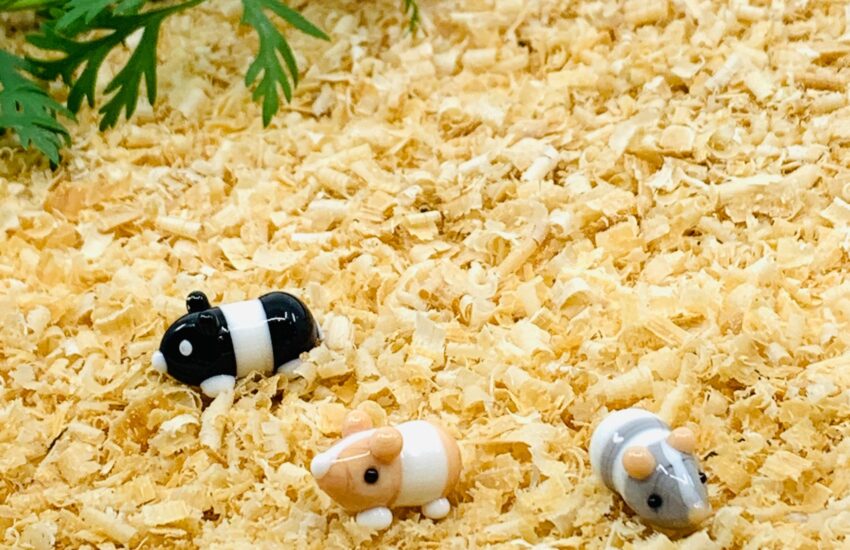Hamster Sensory Play Ideas
Exploring the Benefits of Sensory Play for Hamsters
Sensory play is an essential activity that contributes significantly to the well-being of hamsters. This form of play allows our furry friends to explore their environment using their senses, stimulating their natural instincts and enhancing their physical and mental health. By providing various textures, scents, and materials, we can create an enriching atmosphere that encourages curiosity and playfulness. In this article, we’ll delve into some creative ideas for sensory play that can make a noticeable difference in your hamster’s happiness.
Creating a Sensory Bin
A sensory bin is an excellent way to engage your hamster in a world of discovery. To set up a sensory bin, start with a large, shallow container filled with safe materials like shredded paper, sand, or even coconut fiber. Incorporate different elements such as dried herbs, safe toys, or small tunnels to provide multiple textures and scents. You can also add treats like seeds or dried fruits, encouraging your hamster to dig and forage. This interactive playtime helps improve their cognitive skills while offering a cozy space for exploration.

Incorporating Natural Elements
Another fantastic idea for sensory play involves incorporating natural elements into your hamster’s environment. Items such as safe leaves, dried flowers, or fresh herbs can add unique scents and flavors. Create a small garden area in their enclosure where these can be placed, allowing your hamster to interact with nature. Not only does this provide sensory stimulation, but it also promotes natural behaviors like burrowing and exploring, helping your hamster feel more at home.
Fun and Simple Sensory Play Activities
Once you understand the benefits of sensory play, it’s time to dive into some fun and simple activities to implement in your hamster’s routine. Engaging them in these activities can help keep their minds sharp and their bodies active.
Textured Tunnels
Textured tunnels are an excellent addition to any hamster habitat. You can either purchase commercially made tunnels with different textures or create your own using materials like cardboard, fabric, and even natural items like bark. As your hamster crawls through various textures, they’ll experience new feelings and sounds, making their exploration more engaging. This activity not only entertains them but also supports their natural instinct to burrow and hide.
Foraging Challenges
Foraging is a natural behavior for hamsters, and creating simple foraging challenges can enhance their sensory playtime. Hide their favorite treats in different spots within their cage or sensory bin, using small cups or boxes to make it more challenging. You could also use a small puzzle feeder, encouraging them to figure out how to access their food. This stimulates their minds and encourages physical activity as they search for the hidden goodies.
Interactive Sensory Play Stations
Setting up interactive sensory play stations can greatly enhance your hamster’s playtime experience. These stations can be designed with specific themes in mind, incorporating various sensory experiences tailored to your hamster’s preferences.
Sand Bath Station
A sand bath is crucial for a hamster’s grooming habits and can also provide sensory stimulation. Fill a shallow dish with chinchilla sand, allowing them to dig and roll around freely. This activity not only keeps their fur clean and healthy but presents them with unique textures to explore. Ensure to monitor the sand quality regularly and provide fresh sand whenever necessary for their optimum enjoyment.
Bedding Exploration Zone
Creating a bedding exploration zone can serve as a fun sensory experience for your hamster. Use different types of bedding, like paper-based, aspen shavings, or hay, to create diverse areas in their cage. This initiative encourages your hamster to explore and burrow through various materials, mimicking their natural tendencies. Make sure all beddings used are safe and non-toxic for hamsters to ensure their safety while exploring these new textures.
Key Takeaways
- Sensory play is essential for a hamster’s mental and physical health.
- Creating sensory bins can enhance their exploration and playtime experiences.
- Incorporating natural and textured elements stimulates their senses and encourages natural behaviors.
- Foraging challenges can keep your hamster engaged and mentally stimulated.
- Interactive sensory stations provide diverse and enriching play opportunities.
FAQ
1. What materials are safe for hamster sensory play?
Safe materials for hamster sensory play include shredded paper, coconut fiber, peat moss, and aspen shavings. Avoid materials that could be harmful, such as cedar and pine shavings. Always ensure that any items added to their environment are non-toxic and free from harmful chemicals to keep your hamster safe during their explorative activities.
2. How often should I change the sensory materials?
It’s essential to change sensory materials regularly to maintain a hygienic and stimulating environment for your hamster. Aim to replace or refresh the sensory elements every week or based on how quickly they show signs of wear. This practice prevents odors and ensures your hamster always has fresh materials to explore and enjoy.
3. Can I incorporate scents into sensory play?
Yes, you can incorporate scents into sensory play for your hamster. Dried herbs like chamomile, mint, or basil can provide delightful scents for your hamster to explore. Always introduce new scents gradually and observe your hamster’s reactions to ensure they enjoy the additions and don’t find them overwhelming.
4. Are there specific toys that enhance sensory play?
Various toys can enhance sensory play for hamsters. Look for toys with different textures, such as rubber, wood, or fabric. Tunnels, climbers, and chew toys that produce sounds or scents can also enhance the sensory experience. Always ensure any toys are suitable for your hamster’s size and chew strength to promote safe play.
5. How can I tell if my hamster enjoys sensory play?
You can gauge your hamster’s enjoyment of sensory play by observing their behavior during activities. Signs of enjoyment include active exploration, frequent digging, and returning to the sensory bin or play area. If your hamster appears engaged and curious, it’s a good indication they are enjoying the sensory experience you’ve provided.
